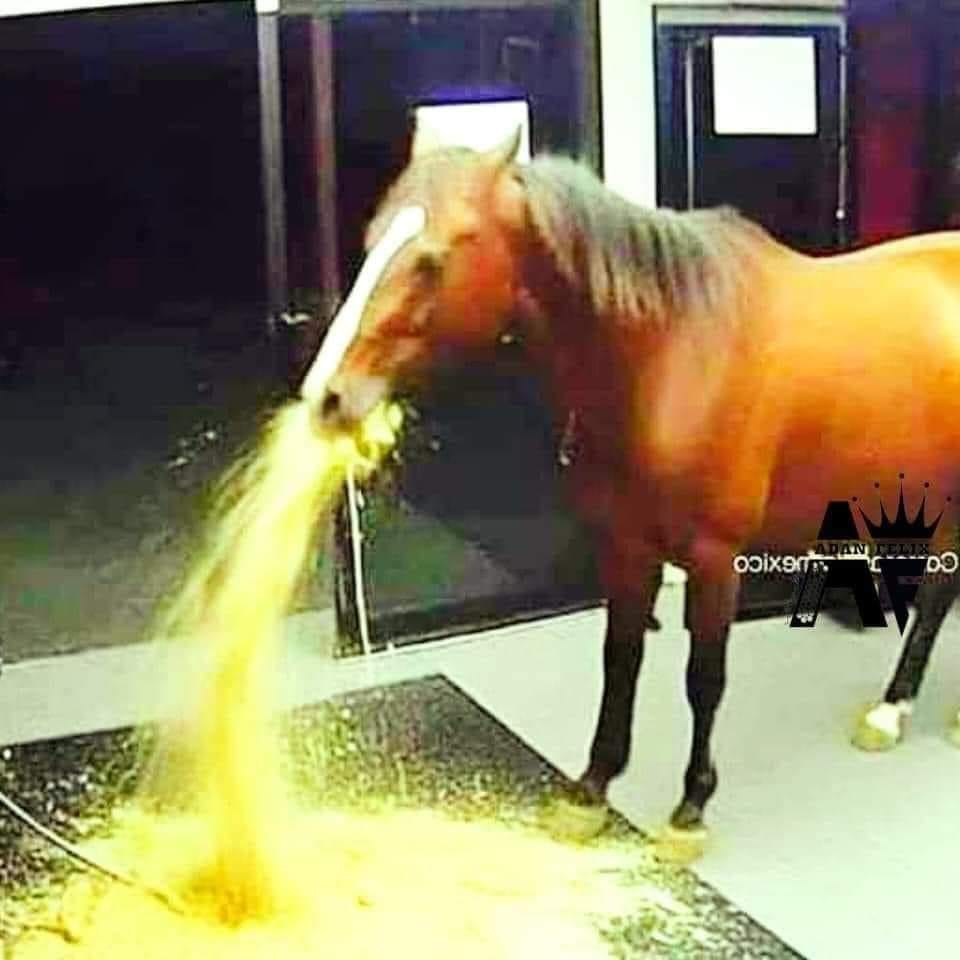I bought 175 g pack of salami which had 162 g of salami as well.
Sup, I’m your local friendly USDA contractor who very much uses scales everyday. Consumer grade kitchen scales are terrible and will lie to you. The fact that it does not go out to the tenths or hundredths is a big flag for accuracy.
We check test our scales twice a year to make sure they are accurate. I once tried check testing my kitchen scale I use for canning for giggles and it failed miserably. It would only register weight on 2 out of 4 quadrants until I got to 10g or so. I’m sure my ohaus is going to show a different and more accurate result if I where to try it.
please actually do it. Not for any real Reason but just because it’s funny to use professional equipment to weigh Pasta
Eight grams off? That seems rather significant. I mean we use to buy 20 grams of weed we’d know if it was almost half shy.
8g sure but this is only within 2% error. most scales would probably be within 3% so this isn’t surprising
You would presumably use a higher precision scale for that purpose. I know my kitchen has a large scale that’s only 1 g precision but can go up to 8 kg, and one that’s .01g precision but only goes up to 500g.
Unless you were using a certified scale and checking it with certified check weights every time you used it, you were just guessing and hoping your dealer wasn’t randomly or purposely off. And density of the material weighed matters also. Weed is far less dense than pasta so a discrepancy can be more noticeable since it takes a larger volume of weed to reach a particular weight than pasta does.
Understand that a digital kitchen scale is made with the cheapest load sensors a manufacturer is willing to pay for. Nor do they come with any kind of traceable certification as to accuracy class. In fact you get no guarantee that your shiny new kitchen scale is fit for even that purpose - just that it turns on, lights up, and displays something when you place a load upon it.
Accuracy is a cruel and VERY expensive mistress to chase. And most people don’t understand it anyway.
that’s why you don’t use a scale that’s only accurate to the full gram (and barely that) when dealing with something where the cost is such that a missing half gram actually makes a difference.
Well you were high so we can’t be sure about those numbers
I wasnt at the time but twenty minutes later, sure
Dealers digital scales have 2 decimal places.
Now, I agree with you that if you believe a home kitchen scale is telling the truth, you are a fool. But as an old toolmaker who dabbled in accuracy for a living, displayed digits does not equal accuracy nor even repeatability. And there can be a fair amount of interpretation involved in analog beam scales.
I think it’s just another PPS, (piss poor scale), scale that is neither accurate nor repeatable. And the packaging material weights are rarely included in listed weights. Since packaging can change at any time due to costs.
Well, it can’t be packaged to scientific standards, it has to be packaged to ours.
Scale accuracy was never a problem or scrutinized until ow, and successfully helped people lose weight, so it’s not the accuracy of the scales that is an issue.
This is blatant consumer fraud and nothing in your field can change that fact, clearly.
I think you’re a bit off track. scale accuracy has been a subject of careful scrutiny for millenia. You absolutely have to use the right tool for the job. A kitchen scale is not the right tool for the job. It would be like complaining that you can’t take your car’s lug nuts off with a pipe wrench.
I remember being in school 20 years ago and being taught about scale inaccuracies and the importance of frequent calibration. The thing about weight loss is that you will lose weight if you’re in a deficit. Your daily calorie needs are going to fluctuate a little bit, regardless. Most people don’t keep activity the exact same, sleep the exact same, take exactly the same steps everyday, plus hormones fluctuate, etc. Your measurements don’t have to be precise, just close enough. People have also lost weight with sloppy volumetric measurements, counting out chips, or even eyeballing the amount of space taken up on their plate. MyPlate.gov was rolled out after consumer research found that it works.
What!?
-2% is probably allowed and this is -1.95%. It’s okay I guess. I’d probably trust my cheap, regularly used and never calibrated kitchen scale less than I would trust these companies to comply with such rules.
Actually it’s usually closer to 5%, but to avoid consumers getting mad most companies have internal variance limits of less. Still, 2% is pretty tight for manufacturing equipment. Despite the mass prevalence of corporate greed, it does end up being better for most companies overall to be on the slightly heavy end of net weight rather than lower end and most manufacturing guardrails and in line weight checks are calibrated with that in mind.
This is entirely due to the risk of images like this going viral and causing blowback for the company. So, to keep products on average a little heavier, posting things like this is great
Hopefully it’s got to average. If they’re cutting 2% off all the time that’s no good
That’s probably what they’re trying to do. The better their quality management is the closer to consistently packing -1.95% they’ll be.
There should be random spot checks. Just grab a bag, weigh the contents, eat it. Like 50/year, or whatever N is required for certainty. Is the mean at 0 deviation, or is it low, or high? Then fines collected for the deviations, but only if they don’t average to zero. Only if they’re tilted.
How do we know your scale is right?
While it’s hard to prove that it’s been done correctly a lot of scales do come with calibration weights.
A lot of cheap kitchen scales are also just crap. Talk to your local drug dealer about what brand of scale might be right for you.
Why I like my mechanical one. I can recalibrate it myself. Heck I taught my 10 year old to do it, it isn’t rocket surgery.
You can also weigh water, 100ml weighs 100 grams
DONT FORGET TO SUBTRACT THE WEIGHT OF THE BEAKER
Also just as plausible that there’s still some broken noodle crumbs and fragments stuck in the bottom flaps of the box.
Huh? Well how do we know that any scale at all is right?
Pretty sure that every modern scale has a “tare” button that resets the weight and zeroes everything out.
That is only single point calibration. You want more than that in case the transfer function is non-linear. Ideally at least two for the extremes of range.
Basically imagine if y does not equal x, say y = x -0.01*x + b. Your tare is going to adjust b such that at x = 0 you get y equals 0. That doesn’t fix x is equal to 900. At 900 you would get 891.
Generally speaking for weight you have differential or integral non-linearity. You fix both by multiple calibration points. Which leads to the range transition problem but whatever. No excuse anymore with FPGAs.
Yeah, but if it measures every 1 gram at 0.98 gram, it will display less in the end
Taring isn’t the same as calibration. Every scale should have instructions on its tolerance (± x grams) and a calibration weight. You’ll have to buy the calibration weight separately.
Well how do we know that any scale at all is right?
My lab has weights that get calibrated against a NIST standard annually. We use those weights to perform daily quality control that our scale is accurate (to +/- 0.01g). If the quality control fails then we recalibrate the scale.
🤔Hmm doubt it’s humidity issue the issue. But more importantly why is it not in 500g packets like all the pasta in the world?
Because of shrinkflation
Get a better scale first
It’s a 2% difference. The cutting and packaging is done (most probably) by machines. I have clinically diagnosed OCD, and I wouldn’t care about 8g of missing pasta… How much do you leave on the plate/in the pot/throw away? :)
Otoh, hitting exactly 410g (assuming the scale is calibrated, and you have the same temperature, air moisture and altitude as the factory), is very difficult. They could adjust their machines so the variation hangs a bit more towards the customer, but for them, 2% x millions of boxes = profit.
Most of our packaging machines require < 1%, target <0.5% variance (both ways). Honestly in practice, over a whole batch the total variance is extremely tiny.
Add to this story the accuracy of a household, not-calibrated scale? Yeah I’d say this seems OK.
What do you make?
Tolerances for food items depend a lot on item size, shape, and irregularity.
I mean… that’s a good point. I only make bulk materials, like 1 ton supersaks, and we tend to OVERfill so customers don’t complain, with the target still being close to zero for a whole batch.
This really isn’t a big deal, the customer paid 2% less off this specific box. Oh.
This isn’t a big deal, the customer paid 2% less than the calculated total for their entire order at checkout and only had to say “me shorting this transaction is just a statistical probability and you should view it as the cost of doing business with me.” Oh.
This isn’t a big deal, the customer gets massive subsidies from the government while the poor manufacturers have to pay stupid worker safety fees and unfair payroll during times of extreme economic ‘fortune’. Oh.
Depending on where you live this is actually illegal. In Germany, as example, if you say that something contains 200g it means that there have to be at least 200g inside. If its less, that can cost the producer a lot if he gets fined for it.
Except no. First issue it’s messured wrong. You messure a full package and then an empty one in the factory. Losses during shipping and so on is the problem of the customer. Especially meat looses a lot of water. People don’t weigh the water in the cloth.
Also the little e (estimated sign, 76/211/EEC) besides the package does specially allow variations. Only the entire batch must be correct on average. But there is a limit on how much variations is allowed. And big companies are closely watched.
*loses
Ah kk. Didn’t knew that.
Right. And they actually do it. Another thing: there’s a list here von “Verbraucherschutz” (consumer protection) that lists all products that have less than before in it to the same price, of course it’s on the package, but most people don’t pay attention to it. The “Mogelpackung Liste” (cheat packaging list): https://www.vzhh.de/mogelpackungsliste
Not really: The average has to be equal or higher as on the label, and the per-package negative error can’t be, for things 300-500g, greater than 3%. 3% of 410g are 12.3g so 402g are actually within EU spec.
Also your kitchen scales aren’t calibrated that’s another ±1% error even if it’s a half-decent one.
If it was actually the case that they were sold a mislabeled box by mass, it’s a crime everywhere and has been for like five thousand years. Standards for scales in marketplaces was one of the first sets of laws of human civilization.
You’ve bought spaghetti Kelly, not cocaine.
I worked on a manufacturing line for 4oz pepper cans
They had a machine that weighed them and kicked out underweight ones.
The tolerances were horrible.
McCormick was 3.9 I think
Black and white can 3.5. !!!
Yes both were made on the same exact line
Yes, it seems that way because your kitchen scale is faulty and measuring everything a bit on the light side.
Or it was measured differently. They could have stacked ten of them on a scale at once while you are stacking one at a time.
Or it was measured differently and they used the legally allowed error bars.
Or the kitchen scale was off.
Or there is some missing mass from say dust.
Or they were assholes and knew they could get away with it.
Lots going on and it would be hard to debug.
deleted by creator
Nah, it’s probably correct. I work in food industry and it’s pretty much never EXACTLY right. It’s always a few grams over or under, and if the bosses get to choose they choose to have it be under.
If everything you’re measuring is lower than expected, you should check the calibration of the scale. Weigh 2 or 3 things you know the weight of that are at different ranges of weights, light, heavy, medium, and see if any are off. Often a scale will be accurate at only within a certain range and get progressively less accurate as the weight increases or decreases from that range.
Could be worth checking your scale, if everything seems to be underweight. Low battery can show as lower result on some scales
I need to start using old batteries in my bathroom scale.
I use no batteries and am very happy with what it displays.
I weighted my 500 gram broccoli recently and it was over 800 grams so I guess this goes both ways. Or then they’re compensating for the stem.
But you can eat the stem. Just peel it and cut it into pieces.
I have the same scale. I wouldn’t trust it too far, especially combined with the tolerances and humidity weight changes.
Well… Cardboard is quite edible, maybe you should also put it on the balance.









